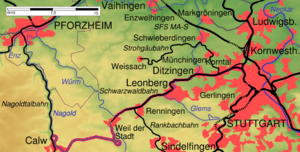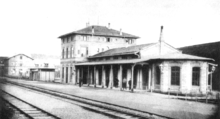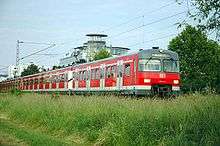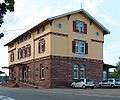Black Forest Railway (Württemberg)
| Black Forest Railway | |||||||||||||||||||||||||||||||||||||||||||||||||||||||||||||||||||||||||||||||||||||||||||||||||||||||||||||||||||||||||||||||||||||||||||||||||||||||||||||||||||||||||||
|---|---|---|---|---|---|---|---|---|---|---|---|---|---|---|---|---|---|---|---|---|---|---|---|---|---|---|---|---|---|---|---|---|---|---|---|---|---|---|---|---|---|---|---|---|---|---|---|---|---|---|---|---|---|---|---|---|---|---|---|---|---|---|---|---|---|---|---|---|---|---|---|---|---|---|---|---|---|---|---|---|---|---|---|---|---|---|---|---|---|---|---|---|---|---|---|---|---|---|---|---|---|---|---|---|---|---|---|---|---|---|---|---|---|---|---|---|---|---|---|---|---|---|---|---|---|---|---|---|---|---|---|---|---|---|---|---|---|---|---|---|---|---|---|---|---|---|---|---|---|---|---|---|---|---|---|---|---|---|---|---|---|---|---|---|---|---|---|---|---|---|---|
 | |||||||||||||||||||||||||||||||||||||||||||||||||||||||||||||||||||||||||||||||||||||||||||||||||||||||||||||||||||||||||||||||||||||||||||||||||||||||||||||||||||||||||||
| Overview | |||||||||||||||||||||||||||||||||||||||||||||||||||||||||||||||||||||||||||||||||||||||||||||||||||||||||||||||||||||||||||||||||||||||||||||||||||||||||||||||||||||||||||
| Native name | Schwarzwaldbahn (Württemberg) | ||||||||||||||||||||||||||||||||||||||||||||||||||||||||||||||||||||||||||||||||||||||||||||||||||||||||||||||||||||||||||||||||||||||||||||||||||||||||||||||||||||||||||
| Locale | Baden-Württemberg, Germany | ||||||||||||||||||||||||||||||||||||||||||||||||||||||||||||||||||||||||||||||||||||||||||||||||||||||||||||||||||||||||||||||||||||||||||||||||||||||||||||||||||||||||||
| Termini |
Stuttgart-Zuffenhausen Weil der Stadt | ||||||||||||||||||||||||||||||||||||||||||||||||||||||||||||||||||||||||||||||||||||||||||||||||||||||||||||||||||||||||||||||||||||||||||||||||||||||||||||||||||||||||||
| Line number | 4810 | ||||||||||||||||||||||||||||||||||||||||||||||||||||||||||||||||||||||||||||||||||||||||||||||||||||||||||||||||||||||||||||||||||||||||||||||||||||||||||||||||||||||||||
| Technical | |||||||||||||||||||||||||||||||||||||||||||||||||||||||||||||||||||||||||||||||||||||||||||||||||||||||||||||||||||||||||||||||||||||||||||||||||||||||||||||||||||||||||||
| Line length | 48.5 km (30.1 mi) | ||||||||||||||||||||||||||||||||||||||||||||||||||||||||||||||||||||||||||||||||||||||||||||||||||||||||||||||||||||||||||||||||||||||||||||||||||||||||||||||||||||||||||
| Track gauge | 1,435 mm (4 ft 8 1⁄2 in) standard gauge | ||||||||||||||||||||||||||||||||||||||||||||||||||||||||||||||||||||||||||||||||||||||||||||||||||||||||||||||||||||||||||||||||||||||||||||||||||||||||||||||||||||||||||
| Minimum radius | 335 m (1,099 ft) | ||||||||||||||||||||||||||||||||||||||||||||||||||||||||||||||||||||||||||||||||||||||||||||||||||||||||||||||||||||||||||||||||||||||||||||||||||||||||||||||||||||||||||
| Electrification | 15 kV/16.7 Hz AC overhead catenary | ||||||||||||||||||||||||||||||||||||||||||||||||||||||||||||||||||||||||||||||||||||||||||||||||||||||||||||||||||||||||||||||||||||||||||||||||||||||||||||||||||||||||||
| Operating speed | 120 km/h (74.6 mph) (maximum) | ||||||||||||||||||||||||||||||||||||||||||||||||||||||||||||||||||||||||||||||||||||||||||||||||||||||||||||||||||||||||||||||||||||||||||||||||||||||||||||||||||||||||||
| Maximum incline | 1.8% | ||||||||||||||||||||||||||||||||||||||||||||||||||||||||||||||||||||||||||||||||||||||||||||||||||||||||||||||||||||||||||||||||||||||||||||||||||||||||||||||||||||||||||
| Route number | 790.6 | ||||||||||||||||||||||||||||||||||||||||||||||||||||||||||||||||||||||||||||||||||||||||||||||||||||||||||||||||||||||||||||||||||||||||||||||||||||||||||||||||||||||||||
| |||||||||||||||||||||||||||||||||||||||||||||||||||||||||||||||||||||||||||||||||||||||||||||||||||||||||||||||||||||||||||||||||||||||||||||||||||||||||||||||||||||||||||
The Black Forest Railway (German: Schwarzwaldbahn) – also known as the Württemberg Black Forest Railway (Württembergische Schwarzwaldbahn) to distinguish it from the railway of the same name in Baden is a railway line in southern Germany from Stuttgart to Calw that was opened in stages between 1868 and 1872. The section from Weil der Stadt to Calw was closed to passenger services in 1983 and goods traffic ceased in 1988.
History
In 1865, the parliament of Württemberg determined to build the Black Forest Railway from Stuttgart via Leonberg and Weil der Stadt to Calw. Planning and construction of the line was directed by Carl Julius Abel. The Black Forest Railway was planned and built as a main line railway, that is with few curves, large radius curves and few level crossings. Moreover, the civil engineering of the line—the two tunnels and the bridgedecks of all the bridges—was designed to allow the construction of a second track. The formation of the line was however generally built as a single-track line, except for the Althengstett–Calw section, which was built as two tracks, so that operations on the 10.5-kilometre-long Calw–Althengstett ramp could run smoothly. This was the first two-track section built on a line in Württemberg during its initial construction.

The Royal Württemberg State Railways completed the section from Zuffenhausen to Ditzingen in 1868 and a year later the section to Weil der Stadt. The last and hardest part of the line between Weil der Stadt and Calw was not completed until 1872. It included a tight loop with a radius of 335 metres to pass by Hackenberg (hill) near Schafhausen. A loop built on a similar principle was built at the end of the line at Hirsau. Here it was necessary to overcome the large height difference between Calw and Althengstett by extending the line. The line runs through the valley of the Tälesbach, a tributary of the Nagold in an extended loop and then turns back and runs through the Hirsau Tunnel to the flank of the Nagold valley. That meant that trains running from Calw towards Althengstett, initially ran to the north and then looped around on the eastern slope of the Nagold valley to run parallel on the same hillside but a lot higher and now running south. The model for this type of alignment was the Brenner Railway in Austria.
Apart from the Hirsau Tunnel, the planners considered it necessary to create two more tunnels in this last phase of construction due to the topographical conditions, but only one was built, the 696 metres long Forst Tunnel. The other, which was originally to be built between Althengstett and Calw, could not be built because of geological problems. Instead, the Feldhütte cutting, which was 1,150 metres long and up to 38 metres deep was built.[2][3]
The Calw maintenance shop (Bahnbetriebswerk Calw) was completed at the end of the track in Calw in 1872.
1872–1977: duplication and electrification
A second track was laid between Stuttgart and Renningen in 1932–1939. Electrification on the section from Stuttgart-Zuffenhausen to Leonberg was completed on 15 May 1939 and on the section from Leonberg to Weil der Stadt on 18 December 1939. Class E 44 electric multiple units were used on the electrified section; after the Second World War, class E 52 sets were used. Initially steam locomotives were used on the section from Weil der Stadt to Calw, but diesel multiple units (DMUs) were also used from 1953, class VT 98 railbuses were introduced only a few years later. The second track was removed between Calw and Althengstett in 1963.
Since 1978, Stuttgart S-Bahn
Since 1978, the Stuttgart–Weil der Stadt section has been integrated as line S 6 of the network of the Stuttgart S-Bahn. At first DMUs continued to Calw as feeders to the S-Bahn. In 1983, the passenger services on the Weil der Stadt–Calw section were abandoned. In 1988, freight traffic was closed as the result of a landslide in the Forst Tunnel near Althengstett. The track work fell into disrepair, and the line was formally closed, with effect from 1 September 1995. The track work of this section is protected as a monument and remains in place.
As part of the establishment of the S-Bahn, a 1 kilometre-long flying junction was built in Zuffenhausen station for the line to Weil der Stadt with an elevated platform and ramps with a 3.0 percent grade.[4]
On 3 December 1988, Stuttgart-Weilimdorf station was opened at a cost of just under DM five million.[5] In October 2003, a second track was put in operation between Renningen and Malmsheim. This allows S-Bahn services to operate with longer travel times, but greater stability, with train now scheduled to cross in Malmsheim rather than in Weil der Stadt. The longer travel time results from the need for trains to stop in Renningen to meet S-Bahn trains on line S 60, which commenced in December 2012.
-

S-Bahn in the direction of Weil der Stadt just behind Stuttgart-Weilimdorf halt
-

Black Forest Railway station in Althengstett
-
The Feldhütte cutting between Althengstett and Calw.
Notes
- ↑ Eisenbahnatlas Deutschland (German railway atlas). Schweers + Wall. 2009. ISBN 978-3-89494-139-0.
- ↑ Oscar Fraas (1986) [1880]. Württembergs Eisenbahnen mit Land und Leuten an der Bahn (in German). Stuttgart.
- ↑ Günter Dutt (1996). "Ein Streifzug durch 150 Jahre Tunnelbauwerke in Württemberg". Jahrbuch für Eisenbahngeschichte (in German). Lübbecke: Uhle & Kleimann (28): 47–63. ISSN 0340-4250.
- ↑ Olaf Schott; Friedrich Sillis; Manfred Thömmes; Friedrich Reinisch (1993). "Neue Streckengleise und Kreuzungsbauwerke". In Jürgen Wedler; Manfred Thömmes; Olaf Schott. Die Bilanz. 25 Jahre Planung und Bau der S-Bahn Stuttgart (in German). Stuttgart: W. Kohlhammer Verlag. pp. 67–124 (especially: pp. 68–76). ISBN 3-925565-03-5.
- ↑ Jürgen Wedler; Manfred Thömmes; Olaf Schott (1993). Deutsche Bundesbahn; Bundesbahndirektion Stuttgart, eds. Die Bilanz. 25 Jahre Planung und Bau der S-Bahn Stuttgart (in German). Stuttgart: Kohlhammer. p. 150. ISBN 3-925565-03-5.
References
- Eberhard Rieber, ed. (1992). Die Württembergische Schwarzwaldbahn (Stuttgart–Calw): Ein historischer, geologischer, literarischer und aktueller EisenbahnStreckenFührer (in German). E. Rieber. ISBN 3-928980-11-4.
- Peter-Michael Mihailescu; Matthias Michalke (1985). Vergessene Bahnen in Baden-Württemberg (in German). Stuttgart: Konrad Theiss Verlag. pp. 186–191. ISBN 3-8062-0413-6.
External links
| Wikimedia Commons has media related to Black Forest Railway (Württemberg). |
- "Württembergische Schwarzwaldbahn" (in German). WSB e.V. Retrieved 9 January 2012.
- D. Jahnke. "Private website about the Württemberg Black Forest Railway" (in German). Retrieved 9 January 2012.
- Lothar Brill. "Photographs of tunnel portals on the Württemberg Black Forest Railway". NRW Rail Archive (in German). tunnelportale.de. Retrieved 9 January 2012.
- 1944 timetable excerpt
